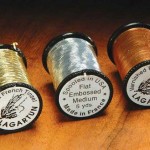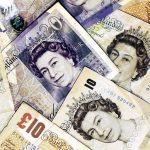Gold and silver remained on-par with last sessions close amid hopes of diplomatic resolution on the Ukraine crisis at peace talks in Geneva. However, escalating tensions in Eastern Europe kept a floor under prices. Meanwhile, figures on jobless claims in the US improved sentiment on the American economy after yesterdays Fed announcement of continuing monetary support for the US.
On the New York Mercantile Exchange, gold futures due in June were priced at $1 301.70 per troy ounce at 13:37 GMT, falling 0.14% for the day. Prices fell 2.05% on Tuesday and are down 1.3% so far this week. Intraday high and low stood at $1 304.40 and $1 296.60 respectively.
Silver for delivery in May traded at $19.63 per troy ounce. Daily fluctuations were between $19.72 and $19.49 per troy ounce. On Tuesday, silver recorded a drop of 2.6%, the biggest in five weeks, though yesterdays session reversed some of the losses with a 0.74% gain.
Ukraine remains a hot-topic on the financial markets as reports on the progress of the anti-terrorist operation in the country, alongside initiation of peace talks in Geneva and Vladimir Putins remarks all moved safe-haven demand.
Elsewhere, the US reported that the number of people continuing to receive jobless benefits fell by 11 000 to 2.74 million in the week ended April 5, marking a 6-year low-point. Four-week moving average for new claims also dropped by 4 750 to 312 000, again, registering the lowest number since October 2007.
Market players follow US economic data in order to assess Fed’s policy, which in turn affects dollar levels. When the greenback gains strength, dollar-denominated materials, such as gold, become more expensive for foreign currency holders and lessens their appeal as an alternative investment.
Yesterday the US dollar was pressured after Janet Yellen, chairman of the Federal Reserve, pledged the central bank will continue to support the US economy. Yellen said: ”Persistently low inflation poses a more immediate threat to the U.S. economy than rising prices,” aligning Fed’s policy with inflation and employment rates targets, and signifying that interest rates will stay near zero for some time to come.
Accelerating consumer inflation and retail sales in the US, though, boosted the dollar significantly earlier this week, pushing down gold prices.
Also earlier this week, reports by Reuters suggested demand in China – the world’s dominant gold consumer, may be on the way down, as readings point that as much as 1000 tons of the precious metal may be locked-up in financial deals, rather than being supplied to production.
Holdings in the SPDR gold fund were reported at 798.43 tons on April 16th – the lowest in more than 2 months, registering a drop of 8.39 tons in assets – the biggest outflow in more than 4 months. The withdrawal is in-line with the three-week down-trend, indicating shrinking demand for the metal.
Copper
Prices for copper futures for settlement in May ranged from $3.0420 to $3.0225 per pound. The red metal stood at $3.0305 at 13:43 GMT, adding 0.17% for the day and marking a two-day rally of 1.44%.
Most impact on copper pricing had yesterdays US industrial output report, which performed better-than-expected to stand at a 0.7% growth for March, instead of the 0.5% forecast, though inferior to February’s reading.
Also yesterday, China – the country consuming nearly 40% of the world’s copper, revealed figures on GDP growth for the first quarter to be on-level with expectations, but the lowest in six quarters. Some gains were made, but overall the down-trend in Chinese growth seems strong.
Additionally, the People’s Bank of China reported that money supply grew at the slowest rate on record, fueling fears of a larger-than-expected slowdown. The Chinese M2 Money Stock rose at an annualized 12.1% pace, failing to meet analysts’ projections for 13.0% growth, down from the preceding period’s 13.3%.
Stephen Green, head of Greater China research at Standard Chartered Plc in Hong Kong, said for Bloomberg: “All the forward-looking indicators are weak – growth is going to continue to slow… We expect a mix of moderate monetary easing over the next few months and more aggressive reform measures.”





